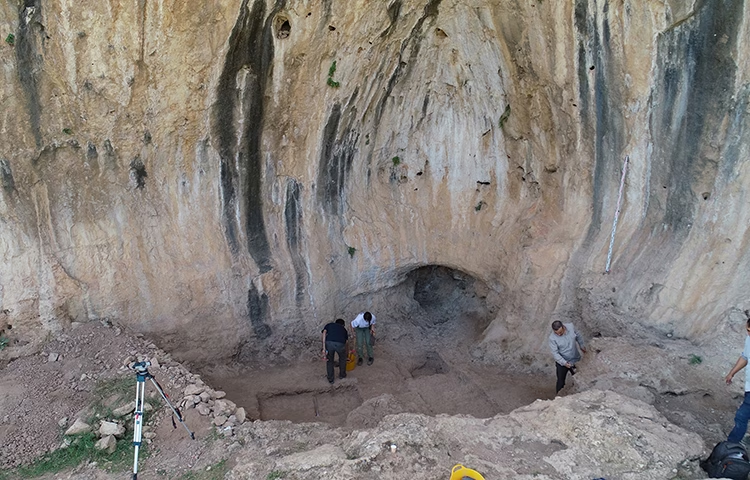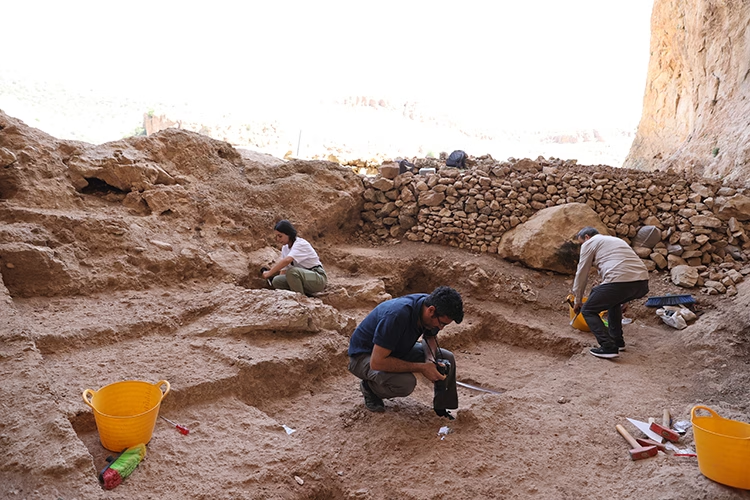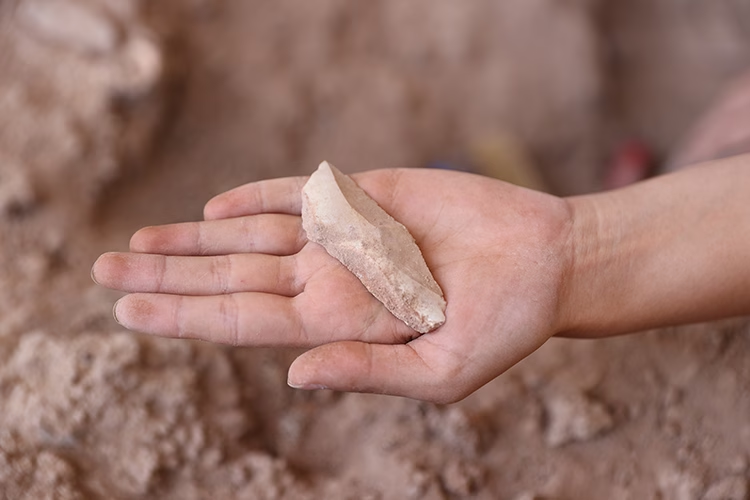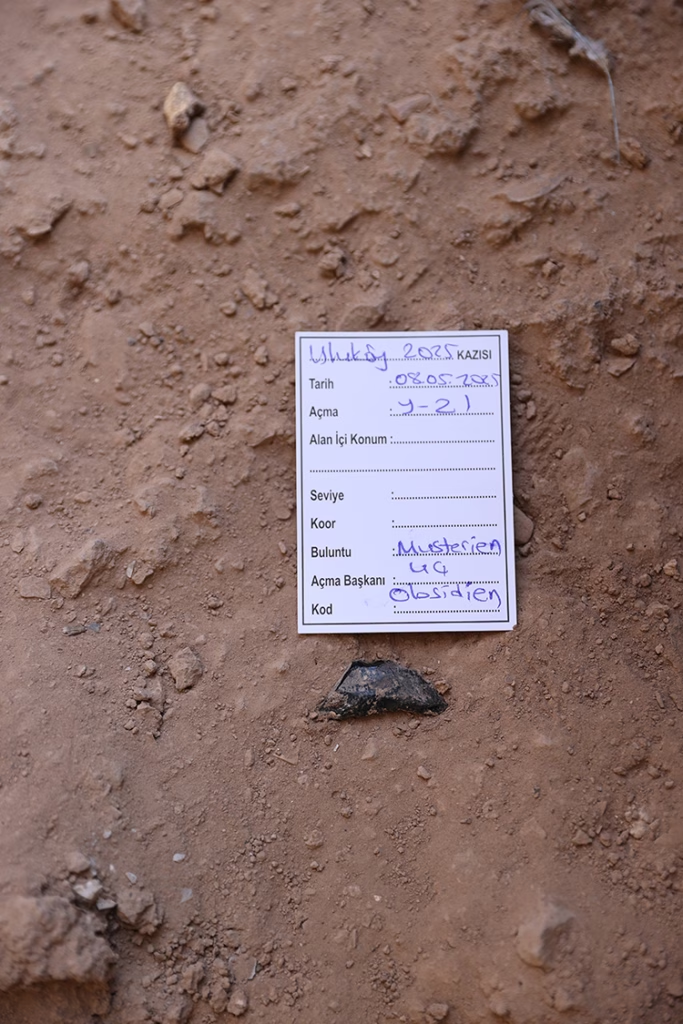New Paleolithic-era findings have been unearthed in the Uluköy Cave, located in southeastern Turkey, where archaeologists are exploring some of the earliest signs of human life. Artifacts such as obsidian tools and animal remains offer fresh insights into human evolution and migration in the Near East.
Uluköy Cave: The First and Only Cave Excavation in Northern Mesopotamia
Situated in Mardin’s Kızıltepe district within the Gurs Valley, Uluköy Cave has become a focal point for prehistoric archaeology. The excavation, led by the Mardin Museum Directorate and scientific advisor Assoc. Prof. Dr. Ergül Kodaş of Artuklu University, marks the first systematic cave excavation in Northern Mesopotamia.

Now in its third season, the project involves an international and interdisciplinary team of archaeologists and anthropologists who are carefully documenting the site’s stratigraphy and its 400,000-year-old occupational history.
Obsidian Tools Push Trade and Mobility Back 200,000 Years
Among the season’s most significant discoveries are obsidian tools found in Middle Paleolithic layers—far earlier than previously recorded use in the Late Paleolithic. These findings suggest that obsidian trade and long-distance human movement in Anatolia may have begun 160,000 to 200,000 years ago, reshaping what we know about prehistoric circulation in the region.

Stone Tools and Animal Bones Reveal Daily Life in Prehistory
Excavations have also revealed a variety of flint tools and faunal remains. These artifacts are crucial for reconstructing subsistence strategies, hunting practices, and paleoenvironmental conditions. All materials are currently being analyzed at the Mardin Museum’s conservation and research laboratories, including DNA testing on select bones.

A Cave That Housed At Least Four Human Species
According to Dr. Kodaş, Uluköy Cave was likely inhabited by at least four distinct human species: Homo erectus, archaic Homo sapiens, Neanderthals, and modern humans. The cave shows continuous human occupation for up to 400,000 years—making it one of the region’s most important paleoanthropological sites.

A Site with the Potential to Rewrite Human History
Due to the scarcity of Paleolithic research in southeastern Turkey and the cave’s unique location along early human migration routes out of Africa, Uluköy Cave is poised to make significant contributions to our understanding of human evolution and movement. Its strategic position in the Near East places it at the crossroads of Eurasian and African prehistory.
Cover Image Credit: Halil İbrahim Sincar/AA




